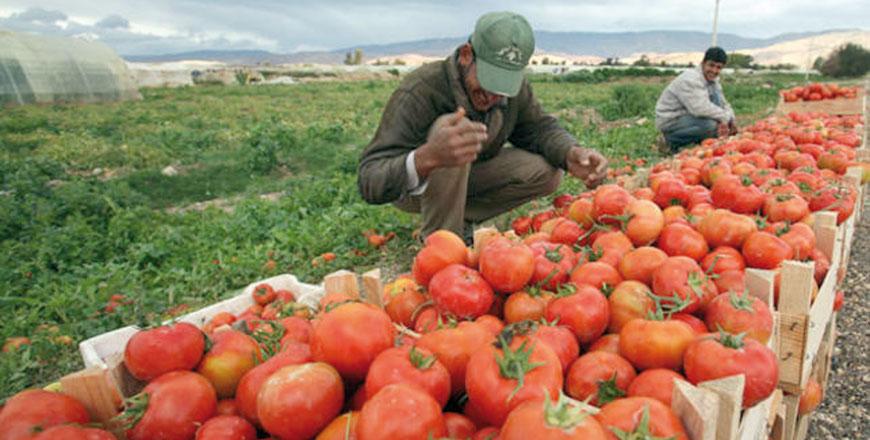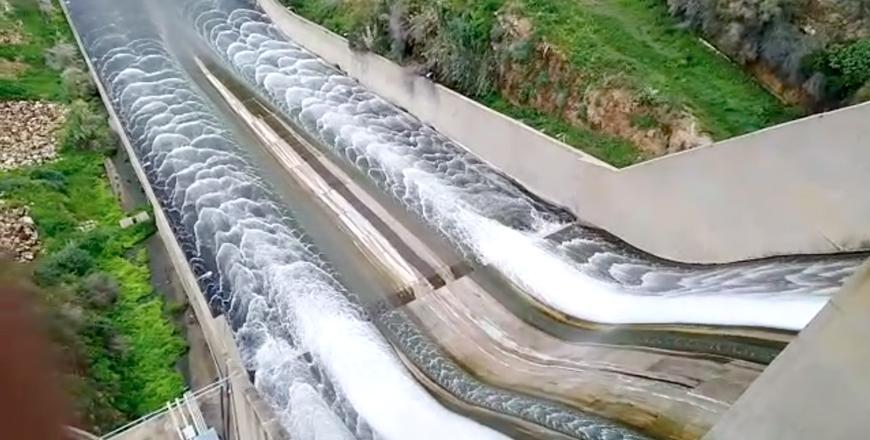You are here
Farmers, water officials breathe sigh of relief over unseasonal heavy rain after ‘below-average’ season
By Hana Namrouqa - Apr 28,2018 - Last updated at Apr 28,2018

Farmers were worried over the late start of the 2017-2018 wet season and its impact on the agricultural sector (Petra photo)
AMMAN — Water officials and farmers on Saturday expressed relief over the weekend’s unusual downpour that filled an additional 15 million cubic metres (mcm) of water in the country’s dams.
Heavy rain across the country on Thursday and in some parts of the Kingdom on Friday, brought by unstable weather conditions, was a respite as it came late in an already below average and delayed rainy season, according to officials at the Ministry of Water and Irrigation.
The rain pushed storage at the country’s 14 major dams halfway closer to reaching their total capacity of 336mcm and also revived the hopes of farmers and livestock breeders of ample irrigation water amounts.
Minister of Water and Irrigation Ali Ghezawi said that the recent rainfall and the floods it caused improved the performance of the wet season as it comes to an end with the start of May.
“More than 15 million cubic metres entered the dams in different parts of the country,” Ghezawi said, expecting a “better” supply of water for drinking and irrigation purposes, especially in the Jordan Valley.
With the Thursday-Friday rains, the accumulative rainfall this year increased to 86 per cent of the country’s annual long-term average of 8.1 billion cubic metres, Ghezawi said in a ministry statement e-mailed to The Jordan Times.
He noted that the northern Jordan Valley received the highest amount of rain, recording 60 millimetres.
“Until the morning of April 27, the dams held 42.3 per cent of their total storage capacity of 336mcm… In addition, the country’s ponds, sand dams and desert dams now store sufficient amount of water, which will help recharge the country’s underground water reserve,” Ghezawi noted.
Meanwhile, ministry spokesperson Omar Salameh said that with the recent rain, the water sector can heave a sigh of relief for several reasons.
“Rain during the 2017-2018 wet season not only started late but brought intermittent precipitation that was also less compared to previous years. And the mere fact that such good amounts of rain came at the end of the wet season is a reason to rejoice for us in the water sector,” Salameh told The Jordan Times.
The rainy season in Jordan usually starts late September or early October and ends on May 10th, which coincides with the end of the khamsini annual weather phenomenon, during which the country witnesses dusty weather and unstable weather conditions that bring rain.
Jordan Valley Farmers Union President Adnan Khaddam said that while the recent rain poses “no actual significance” to current cultivations in the Jordan Valley as the season is ending, floods that entered the dams would improve the quality of the stored water.
“Several millions of cubic metres of high quality water entered the dams; this gives us a state of reassurance as the rainy season bids us farewell,” Khaddam told The Jordan Times.
He noted that as the dams receive additional rainwater, salinity levels at the already stored water decline, which reflects well on the quality of crops cultivated from the water of the dams.
The rain is not only good news to the dams and irrigation, but also to cattle breeders who rely on natural pastures as a source of feed their animals.
Ubu Mrayed Atwan, a livestock breeder who takes his 200 heads of sheep and goats for grazing in empty lands in Amman every morning, said that the rain is great to prolong spring.
“More rain means richer pastures and thicker grass and also longer spring,” Atwan said as he sat on a hill guarding his sheep and goats grazing in an empty land in Arjan.
Related Articles
AMMAN — For the first time ever, four of the country’s main dams overflowed simultaneously on Monday, according to officials at the Ministry
AMMAN — Over 20 million cubic metres (mcm) of water entered the country’s 12 main dams after the rain, which lasted between Friday and Satur
AMMAN — A total of 105.7 million cubic metres (mcm) of water is stored in the Kingdom’s 14 major dams, which consitute 31.1 per cent of the



















